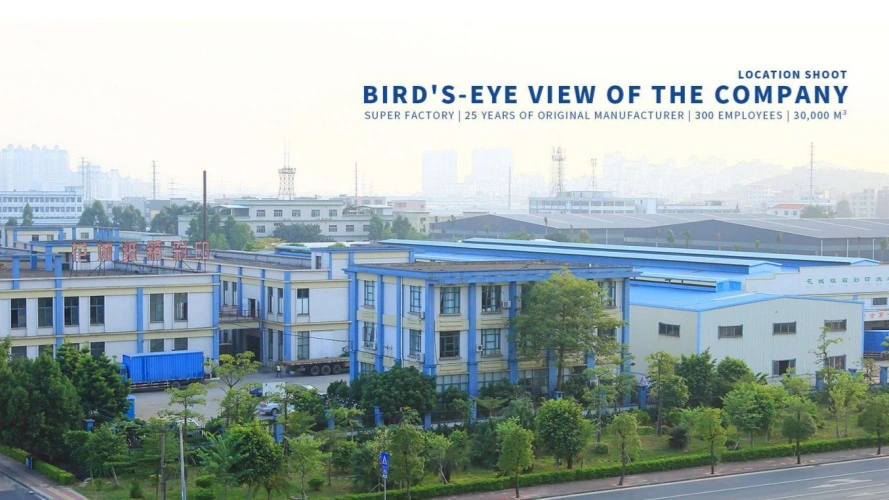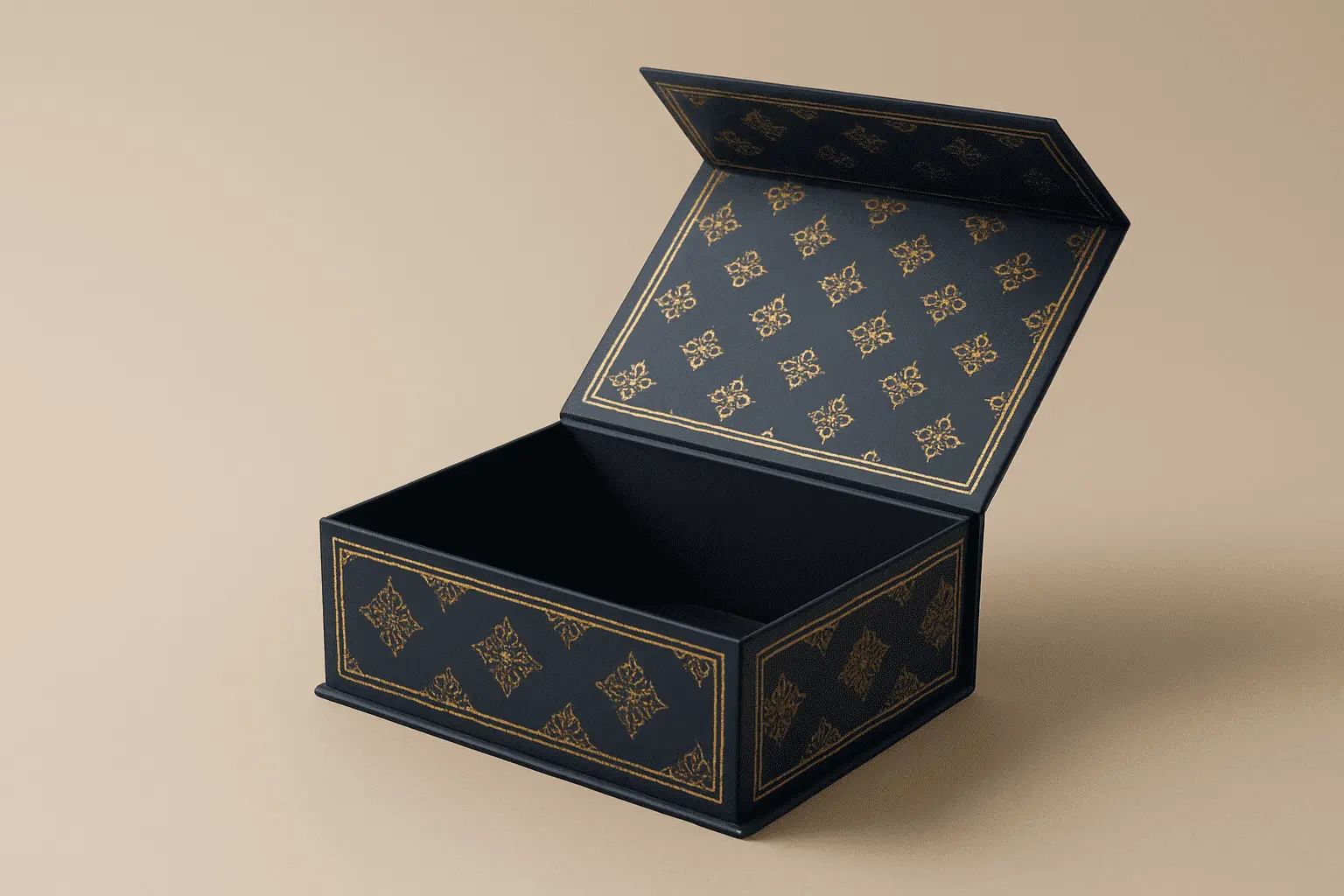Choosing the Right Packaging: Rigid vs. Foldable Boxes
Standing before towering warehouse shelves, watching products compete for consumer attention, business owners face a critical decision that could make or break their brand's success. The choice between rigid and foldable packaging isn't just about cost—it's about brand perception, customer experience, and ultimately, sales performance. Understanding the nuances of Rigid vs. Foldable Boxes becomes essential when your packaging investment directly impacts profitability, shipping costs, and consumer loyalty. This comprehensive guide reveals the strategic advantages of each option, helping you navigate the complex packaging landscape with confidence and make informed decisions that align with your business objectives.

Understanding Rigid vs. Foldable Boxes: The Foundation of Smart Packaging Decisions
The packaging industry presents businesses with two primary structural solutions, each serving distinct market needs and consumer expectations. Rigid boxes have a sturdier nature and they do not get mold or collapse as the folding cartons do. It is used for higher-end products where the value of perceived is important. Understanding these fundamental differences enables brands to align their packaging strategy with their product positioning and target market expectations. Rigid packaging represents the premium segment of the packaging spectrum, constructed using heavyweight materials such as grey chipboard or duplex chipboard that provide exceptional structural integrity. These boxes maintain their shape consistently throughout the supply chain, from manufacturing through retail display and final consumer unboxing. The manufacturing process involves precise die-cutting, sophisticated assembly techniques, and often incorporates magnetic closures or intricate folding mechanisms that enhance the user experience. Foldable boxes, conversely, prioritize efficiency and cost-effectiveness while maintaining adequate protection for most products. Folding cartons or folding box packaging have the advantage of being shipped flat, saving the cost of shipping compared to shipping rigid boxes. These solutions utilize paperboard materials that can be precisely scored and folded into three-dimensional structures when assembled, offering remarkable space efficiency during transportation and storage phases.
-
Material Engineering and Construction Differences
The construction methodology fundamentally differs between rigid and foldable packaging solutions. Rigid boxes typically employ multi-layer chipboard construction, where recycled pulp is compressed under high heat and pressure to create dense, stable substrates. The surface treatments may include SBS C1S for premium printing applications, providing exceptional color reproduction and finishing capabilities. Foldable packaging utilizes thinner paperboard substrates, typically ranging from 0.3 to 1 millimeter thickness, engineered for precise folding without compromising structural integrity. These boxes are made from paperboard that's thinner and lighter than the heavyweight paperboard used in rigid boxes, generally around 0.3 to 1 millimeter in thickness. The material selection directly influences the box's ability to protect contents, display graphics effectively, and provide the desired tactile experience for end users.
Cost Analysis: Rigid vs. Foldable Boxes Impact on Business Operations
-
Initial Manufacturing and Material Costs
The financial implications of choosing between rigid and foldable packaging extend far beyond initial material costs. Folding boxes, crafted from paperboard or corrugated material, present a budget-friendly alternative compared to their rigid counterparts, catering to businesses aiming to streamline packaging costs. However, comprehensive cost analysis must consider the entire value chain, including manufacturing complexity, setup requirements, and long-term brand positioning effects. Rigid packaging typically requires 40-60% higher initial investment due to material density, complex assembly processes, and specialized machinery requirements. The manufacturing involves multiple stages including precise die-cutting, structural assembly, and often magnetic closure integration. Premium finishing techniques such as hot foil stamping, embossing, and spot UV coating add significant value but increase production costs proportionally. Foldable packaging manufacturing benefits from streamlined production processes, utilizing automated folding and gluing systems that achieve high-volume output with minimal labor intervention. They demand less packaging material, are easy to manufacture in large quantities, and can be stored flat, which reduces costs. The simplified construction allows for rapid customization and shorter lead times, making foldable options particularly attractive for seasonal campaigns or test market launches.
-
Shipping and Logistics Considerations
Transportation efficiency represents a critical factor in total packaging cost evaluation. Our collapsible rigid boxes can save more than 60% of shipping and storage costs compared with rigid gift boxes, while saving 20%-30% costs compared with standard collapsible rigid boxes. This innovative approach combines the premium appearance of rigid packaging with the efficiency benefits traditionally associated with foldable solutions. Storage requirements differ dramatically between packaging types. Rigid boxes arrive fully assembled, requiring significant warehouse space and careful handling to prevent damage. Foldable cartons ship flat-packed, maximizing container utilization and reducing freight costs substantially. For businesses managing large inventory volumes, this space efficiency translates into reduced warehousing expenses and improved cash flow management.
Premium Brand Positioning with Rigid vs. Foldable Boxes
-
Luxury Market Expectations and Consumer Psychology
Premium brands operate in markets where consumer expectations extend beyond product functionality to encompass the entire ownership experience. Rigid packaging serves as a tangible representation of brand values, communicating quality, attention to detail, and exclusivity through structural design and tactile interaction. The unboxing experience becomes a marketing opportunity, creating memorable moments that encourage social sharing and brand advocacy. The psychological impact of packaging structure influences consumer perception significantly. Rigid boxes convey permanence and value, suggesting that the enclosed product deserves careful preservation and repeated use. This perception directly correlates with higher perceived value, enabling premium pricing strategies and enhanced profit margins. Luxury cosmetics, high-end electronics, and artisanal products particularly benefit from rigid packaging's ability to elevate brand positioning. High-quality materials such as SBS C2S enable sophisticated printing applications, supporting intricate design elements that reinforce brand identity. The dual-side coating allows for interior printing, creating surprise elements that delight consumers and strengthen brand connection. Premium finishing techniques including holographic foil stamping, combination spot UV and embossing treatments create multi-sensory experiences that differentiate products in competitive markets.
-
Mass Market Efficiency and Brand Accessibility
Foldable packaging excels in mass market applications where cost efficiency enables broader market reach without compromising brand integrity. Folding cartons use renewable, often FSC-certified paper, and have a lower carbon footprint due to flat shipping. This environmental advantage aligns with growing consumer demand for sustainable packaging solutions, particularly among environmentally conscious demographics. Brand accessibility becomes crucial for companies seeking market expansion or targeting price-sensitive segments. Foldable packaging enables competitive pricing while maintaining professional appearance and adequate product protection. The versatility of paperboard substrates, from cost-effective CCNB to premium SBS options, allows brands to optimize packaging investment based on specific product requirements and market positioning objectives.
Performance and Durability: Structural Integrity Analysis
-
Protection Capabilities and Product Safety
Product protection requirements vary significantly across industries and applications, directly influencing packaging selection criteria. Rigid boxes provide superior crush resistance and structural stability, making them ideal for fragile items, heavy products, or multi-component packages requiring secure organization. The solid construction prevents deformation during handling, ensuring consistent appearance throughout the distribution process. Compared to the more sturdy rigid and corrugated boxes, they may not be as protective of the product inside. However, foldable packaging can achieve adequate protection through strategic design enhancements including interior dividers, protective inserts, and reinforcement panels. The key lies in matching protection capabilities to specific product requirements rather than assuming one solution universally excels. Advanced engineering techniques enable foldable packaging to compete effectively in protection-critical applications. Multi-wall construction, strategic corrugation placement, and specialized closure designs enhance structural performance while maintaining cost efficiency. For products requiring moderate protection levels, properly engineered foldable solutions provide excellent value propositions.
-
Long-term Durability and Reusability Factors
Consumer behavior increasingly favors packaging that provides ongoing utility beyond initial purchase protection. Rigid boxes naturally excel in reusability applications, with consumers frequently repurposing premium packaging for storage, gifting, or organizational purposes. This extended lifecycle creates ongoing brand exposure and positive associations, effectively extending marketing reach without additional investment. The durability advantage of rigid packaging becomes particularly valuable for products requiring long-term storage or multiple handling events. Premium materials resist wear, maintain structural integrity under stress, and preserve graphic quality throughout extended use periods. These characteristics prove essential for products with extended shelf lives or those requiring multiple transport events before final consumption.
Sustainability and Environmental Impact
-
Material Sourcing and Recycling Considerations
Environmental responsibility has evolved from optional consideration to essential business requirement, influencing packaging decisions across all market segments. Both rigid and foldable packaging solutions offer sustainable options when properly specified and sourced. FSC-certified materials ensure responsible forest management, while post-consumer recycled content reduces environmental impact without compromising performance. Rigid packaging sustainability focuses on material efficiency and longevity. While initial material consumption may be higher, the extended lifespan and reusability potential can offset environmental impact through reduced replacement frequency. Grey chipboard and duplex chipboard substrates frequently incorporate high percentages of recycled content, supporting circular economy principles while maintaining performance standards. Foldable packaging excels in transportation efficiency, directly reducing carbon emissions through optimized shipping utilization. The lighter weight and compact shipping configuration substantially decrease fuel consumption per unit, particularly beneficial for high-volume distribution scenarios. Material efficiency in production processes further reduces waste generation and energy consumption during manufacturing.
-
Carbon Footprint and Transportation Efficiency
Transportation represents a significant component of packaging environmental impact, making shipping efficiency a critical sustainability factor. Our collapsible rigid box design addresses this challenge by combining premium appearance with transportation efficiency, achieving optimal balance between brand positioning and environmental responsibility. The flat-shipping advantage of foldable packaging creates substantial carbon footprint reductions through improved container utilization and reduced transportation requirements. This efficiency becomes particularly important for global distribution networks where shipping costs and environmental impact multiply across international supply chains.
Practical Applications: Industry-Specific Considerations
-
Cosmetics and Personal Care Packaging
The cosmetics industry demands packaging solutions that protect sensitive formulations while creating compelling brand experiences. Rigid packaging dominates premium cosmetics segments, providing the luxury presentation expected by discerning consumers while protecting delicate products from contamination and damage. Premium materials such as SBS C2S enable sophisticated printing applications that showcase product imagery and brand messaging effectively. Surface finishing techniques including hot foil stamping, embossing, and spot UV coating create tactile experiences that reinforce quality perceptions. Our automatic visual positioning production line ensures consistent quality while minimizing production time, enabling rapid response to market demands and seasonal campaigns. Foldable packaging serves effectively in mass market cosmetics applications where cost efficiency enables competitive pricing without sacrificing professional appearance. CCNB substrates provide excellent printing surfaces for vibrant graphics while maintaining cost-effectiveness for high-volume production runs.
-
Electronics and Technology Product Protection
Electronics packaging requires specialized protection against static discharge, moisture, and physical damage while accommodating complex product configurations and accessory components. Rigid packaging excels in high-value electronics applications where product protection justifies premium packaging investment. The structural integrity of rigid boxes prevents deformation that could damage sensitive components, while interior customization options enable secure organization of accessories and documentation. Premium finishing techniques create unboxing experiences that match the sophistication of enclosed technology products.
-
Food and Beverage Applications
Food packaging operates under strict safety and regulatory requirements while meeting diverse functional needs from product protection to consumer convenience. Foldable packaging dominates food applications due to regulatory compliance, cost efficiency, and versatility in size and configuration options. SBS C2S substrates provide food-safe surfaces suitable for direct contact applications while supporting high-quality printing for appetite appeal and brand recognition. The recyclability of paperboard aligns with growing consumer demand for environmentally responsible food packaging.
Advanced Manufacturing Techniques and Customization Options
-
Production Process Innovation
Modern packaging manufacturing leverages advanced technologies to optimize quality, efficiency, and customization capabilities. Our production process encompasses comprehensive stages from design consultation through final delivery, ensuring consistent quality and customer satisfaction throughout the engagement. The printing phase utilizes offset, digital, and flexographic processes to achieve optimal graphic reproduction across different substrate types and quantity requirements. Surface finishing enhances both protection and visual appeal through UV coating, lamination, and specialty techniques that create distinctive brand experiences. Die-cutting precision enables complex structural designs and unique opening mechanisms that differentiate products in competitive markets. The combination of automated production systems with skilled craftsmanship ensures consistent quality while maintaining flexibility for custom requirements.
-
Material Innovation and Technical Advancement
Substrate innovation continues advancing packaging performance while addressing environmental concerns. Metallic papers provide luxury appearance with enhanced shelf appeal, while Brown Kraft materials offer authentic, sustainable aesthetics preferred by organic and artisanal brands. Advanced coating technologies enable enhanced barrier properties, improved printing capabilities, and specialized performance characteristics that expand application possibilities. The integration of intelligent design with material science creates packaging solutions that exceed traditional performance limitations while maintaining cost efficiency.
Decision Framework: Selecting the Optimal Packaging Solution
-
Strategic Assessment Criteria
Successful packaging selection requires systematic evaluation of multiple factors including product characteristics, brand positioning, market requirements, and operational constraints. The decision framework should prioritize long-term strategic objectives rather than focusing exclusively on initial cost considerations. Product value and positioning directly influence packaging investment justification. High-value products typically warrant premium packaging that reinforces quality perception and brand differentiation. Mass market products benefit from efficient packaging that enables competitive pricing while maintaining professional presentation standards. Market expectations vary significantly across demographics and geographic regions, requiring careful analysis of target consumer preferences and competitive landscape dynamics. Understanding these nuances enables optimal packaging selection that resonates with intended audiences while supporting business objectives.
-
Implementation and Optimization Strategies
Successful packaging implementation requires collaboration between design, manufacturing, and logistics teams to optimize performance across all operational aspects. Our experienced R&D department, consisting of over ten packaging engineers with extensive professional experience, provides comprehensive support throughout the development and optimization process. Quality assurance protocols ensure consistent performance and appearance across production runs while maintaining compliance with relevant industry standards and regulations. Our certifications including ISO14001-2015 Environmental Management System, ISO9001-2015 Quality Management System, and FSC certification demonstrate commitment to excellence and environmental responsibility.
Conclusion
The choice between rigid and foldable packaging ultimately depends on strategic business objectives, target market requirements, and operational priorities. Rigid vs. Foldable Boxes each offer distinct advantages that serve different market segments effectively. Premium brands benefit from rigid packaging's luxury positioning and superior protection capabilities, while mass market applications favor foldable solutions' cost efficiency and environmental advantages. Success lies in matching packaging characteristics to specific product requirements and market expectations rather than assuming universal solutions.
Cooperate with GUANGZHOU FETCHING COLOR PRINTING & PACKAGING LTD.
Established in 1999, Guangzhou Fetching Color Printing & Packaging Co., Ltd. brings over 25 years of packaging expertise to global clients seeking superior rigid and foldable packaging solutions. Our 50,000㎡ manufacturing facility houses advanced equipment including KBA106-(9+1) UV printing machines, Heidelberg XL162-6L printing machines, and specialized production lines that deliver exceptional quality and efficiency.
Our comprehensive R&D capabilities, supported by over ten experienced packaging engineers, provide innovative solutions in material applications, structural development, and process optimization. We serve diverse industries including cosmetics, personal care, electronics, and food sectors with customized packaging that enhances brand positioning while meeting operational requirements.
With ISO14001-2015, ISO9001-2015, Smeta, G7 Color Management, FSC, and Disney certifications, we maintain the highest standards in quality management and environmental responsibility. Our commitment extends beyond manufacturing excellence to include comprehensive customer support throughout the entire engagement process.
Partner with us as your trusted China Rigid vs. Foldable Boxes factory, China Rigid vs. Foldable Boxes supplier, and China Rigid vs. Foldable Boxes manufacturer. Experience competitive Rigid vs. Foldable Boxes price with High Quality Rigid vs. Foldable Boxes for sale through our comprehensive China Rigid vs. Foldable Boxes wholesale program. Contact us at public@fetchingprinting.com to discuss your packaging requirements and discover how our expertise can elevate your brand's packaging performance.
FAQ
Q: What are the main cost differences between rigid and foldable boxes?
A: Rigid boxes typically cost 40-60% more initially due to materials and complexity, but foldable boxes offer 20-60% savings in shipping and storage costs.
Q: Which packaging type is better for luxury products?
A: Rigid boxes excel for luxury applications due to their premium appearance, structural integrity, and enhanced unboxing experience that reinforces brand value.
Q: How do environmental impacts compare between the two options?
A: Foldable boxes have lower carbon footprints due to efficient shipping, while rigid boxes offer better reusability and longer lifecycles.
Q: What industries benefit most from each packaging type?
A: Rigid boxes suit cosmetics, electronics, and luxury goods requiring premium presentation, while foldable boxes work well for food, mass retail, and cost-sensitive applications.
References
1. "Packaging Engineering: Principles and Applications in Modern Manufacturing," Johnson, M.K., Industrial Packaging Association, 2024.
2. "Sustainable Packaging Solutions: Material Science and Environmental Impact Analysis," Williams, S.R. & Chen, L., Environmental Packaging Research Institute, 2023.
3. "Consumer Psychology and Packaging Design: Strategic Brand Positioning Through Structural Solutions," Thompson, R.J., Marketing and Design Research Foundation, 2024.
4. "Advanced Manufacturing Techniques in Modern Packaging Production," Rodriguez, A.M., International Packaging Technology Consortium, 2023.

Based on your location and order quantity, you will have the opportunity to receive a limited time free shipping promotion!

Corporate Purpose
